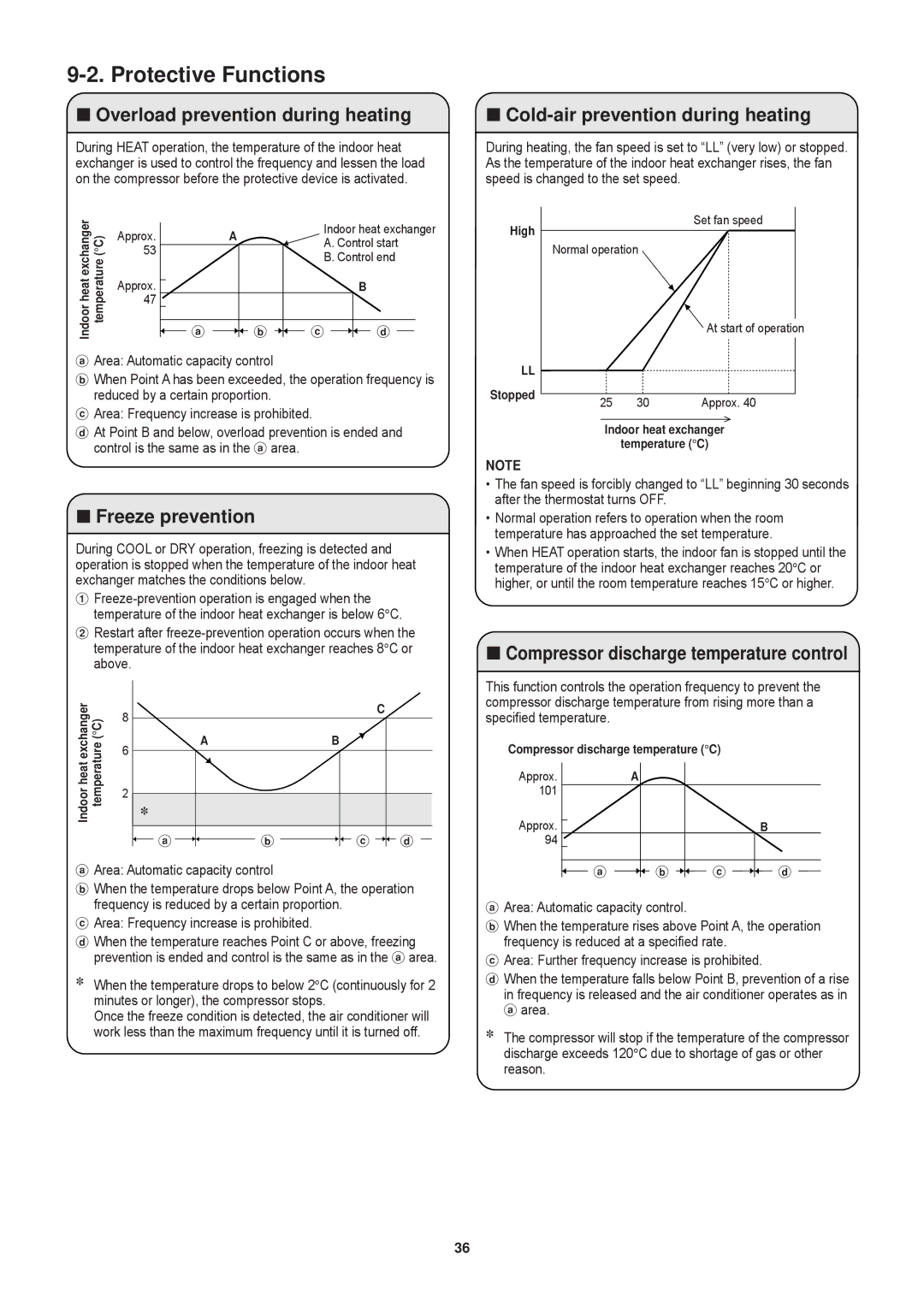SAP-CRV93EH, SAP-CRV123EH, SAP-KRV93EH, SAP-KRV123EH specifications
The Sanyo SAP-KRV93EH and SAP-KRV123EH are innovative air conditioning units that stand out in the market for their performance, energy efficiency, and user-friendly features. Designed to cater to various cooling needs, these models are suitable for both residential and commercial spaces, ensuring comfort in every environment.One of the main features of both models is their advanced inverter technology. This technology allows the air conditioners to adjust the compressor speed according to the desired temperature, offering precise climate control while significantly reducing energy consumption. This not only translates to lower electricity bills but also minimizes the environmental impact, making the SAP-KRV93EH and SAP-KRV123EH eco-friendly options.
The SAP-KRV93EH has a cooling capacity of 9,000 BTU, while the SAP-KRV123EH boasts an impressive 12,000 BTU. This range ensures that users can choose the appropriate unit according to the size of the room or area requiring cooling. The units are equipped with high-efficiency filters that purify the air, removing dust, allergens, and other particulates. This feature is particularly beneficial for those with allergies or respiratory issues, providing a healthier indoor environment.
In terms of user interface, both models are designed with ease of use in mind. They include a remote control that allows users to adjust settings without needing to get up. Additionally, the units have a programmable timer, ensuring that users can set the air conditioning to operate only when needed, enhancing convenience and energy savings.
Another notable technology present in these models is the “Smart Duct” airflow system. This system optimizes air distribution, allowing for an even distribution of cooled air throughout the room. This means fewer hot spots, leading to a more comfortable living or working space.
Both the SAP-KRV93EH and SAP-KRV123EH have sleek designs that blend well with various interior styles, allowing them to fit seamlessly into homes or offices. Furthermore, they operate quietly, ensuring that users can enjoy a peaceful environment.
Overall, the Sanyo SAP-KRV93EH and SAP-KRV123EH air conditioning units combine advanced technology, energy efficiency, and practical features, making them an excellent choice for those looking to enhance their comfort while being conscious of energy usage. With their robust performance and user-friendly attributes, these models epitomize what modern air conditioning solutions should offer.

